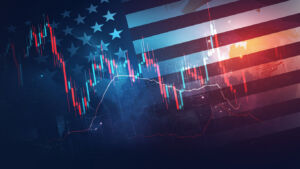In today’s competitive market, creating a brand that resonates with consumers is more crucial than ever. Among the myriad strategies to build and enhance brand visibility, branded merchandise holds a unique and powerful position. This comprehensive guide explores the ins and outs of branded merchandise, from its definition to its benefits, types, and strategies for effective use.
What is Branded Merchandise?
Branded merchandise, also known as promotional products or swag, refers to items that are customized with a brand’s logo, name, or message. These items are often used for promotional purposes, given away to clients, employees, or prospects at events, conferences, or as part of marketing campaigns. The goal is to increase brand awareness, build loyalty, and create a lasting impression.
Benefits of Branded Merchandise
The benefits of branded merchandise are vast and can significantly impact a company’s marketing efforts and overall brand perception. Here are some key advantages:
Enhanced Brand Recognition
Customized items serve as a constant reminder of your brand to the recipients. Each time the merchandise is used, your brand gets exposure, increasing recognition and recall.
Building Customer Loyalty
Branded merchandise can foster a sense of belonging and loyalty among your customers. By providing high-quality, useful products, you show appreciation and value, encouraging repeat business.
Cost-Effective Marketing
Compared to traditional advertising methods, promotional products offer a cost-effective way to reach a broad audience. The longevity of items like t-shirts, mugs, or pens ensures ongoing promotion without additional investment.
Versatile Marketing Tool
From corporate giveaways to trade show swag, branded merchandise can be tailored to fit any marketing strategy or event, making it a versatile tool in your promotional arsenal.
Types of Branded Merchandise
The variety of branded merchandise available is vast, catering to different budgets, audiences, and marketing objectives. Some popular categories include:
- Apparel: T-shirts, hats, and jackets with a company logo are wearable forms of advertisement.
- Office Supplies: Branded pens, notebooks, and USB drives are useful and often used in professional settings.
- Tech Gadgets: Items like phone cases, earbuds, or portable chargers with a brand’s logo can appeal to tech-savvy consumers.
- Eco-Friendly Products: Reusable water bottles, tote bags, and bamboo utensils cater to environmentally conscious audiences.
Strategies for Effective Use of Branded Merchandise
To maximize the impact of your promotional products, consider the following strategies:
Know Your Audience
Select merchandise that resonates with your target audience’s needs and preferences. The more relevant the item, the more likely it will be used and seen.
Focus on Quality
High-quality items not only reflect positively on your brand but are also more likely to be kept and used by recipients, extending the lifespan of your promotional effort.
Integrate with Overall Marketing Strategy
Branded merchandise should complement your overall marketing strategy. Use it to reinforce your brand message and values across all marketing channels.
Measure ROI
Track the effectiveness of your merchandise campaigns by monitoring metrics such as increased brand awareness, customer loyalty, and ultimately, sales. Adjust your strategy based on these insights.
Conclusion
Branded merchandise is a powerful tool in the marketing toolbox, offering a unique blend of visibility, versatility, and value. By carefully selecting products that align with your brand identity and audience preferences, and by integrating these items into your broader marketing strategy, you can create meaningful connections and drive brand loyalty. With creativity and strategic planning, branded merchandise can elevate your brand and leave a lasting impression on your audience.




